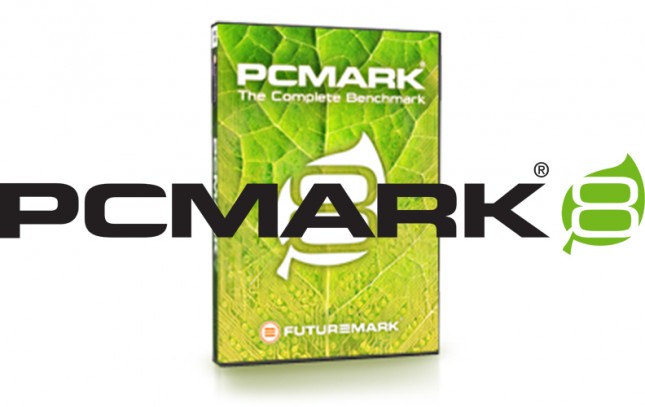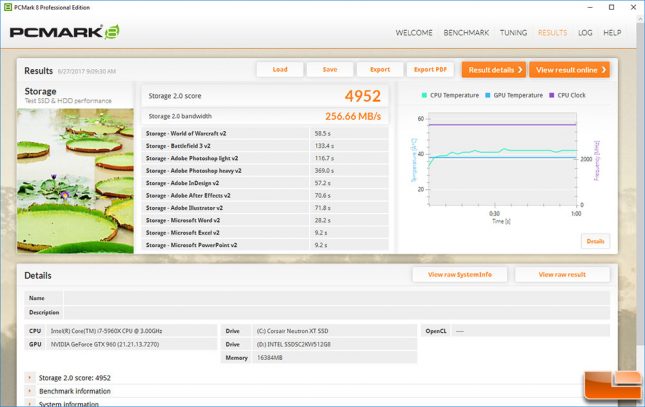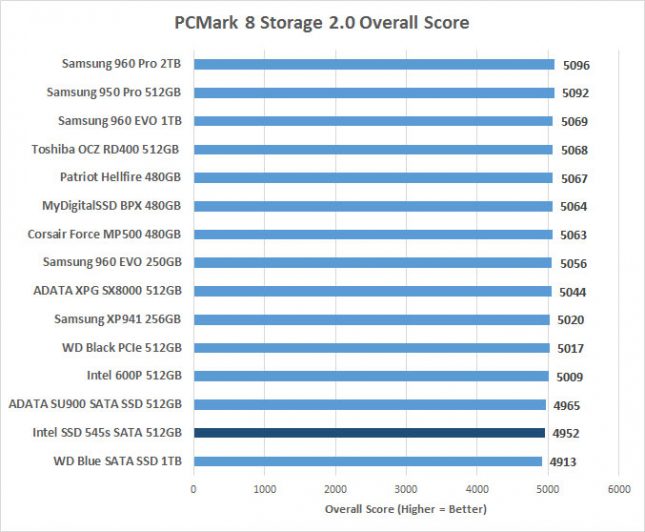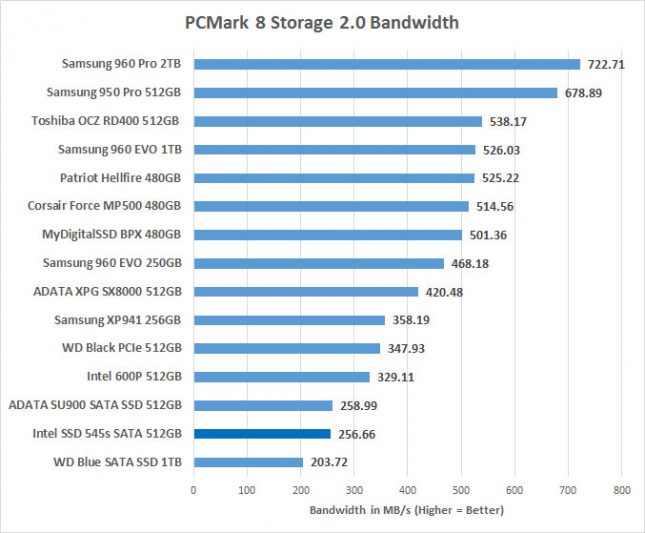Intel SSD 545s 512GB SATA SSD Review – 64-Layer TLC NAND
PCMark 8 Storage Test
PCMark 8 might have come out in 2013, but it is still Futuremark’s most recent version of their industry standard PC benchmarking tool. PCMark 8 allows you to test the performance of all types of PC, from tablets to desktops. With five separate benchmark tests plus battery life testing, PCMark 8 helps you find the devices that offer the perfect combination of efficiency and performance. PCMark 8 is recognized by many as being the complete PC benchmark for home and business. We ran the Storage 2.0 benchmark test suite on PCMark 8 v2.7.613 that came out in April 2016. This is a major update accommodates a change in the latest version of Adobe After Effects and provides better support for NVMe SSDs. The changes affect the workloads in the Adobe Applications benchmark and the Storage 2.0 benchmark. Scores from the new versions of these tests should not be compared with older versions, so just a heads up if you wanted to compare scores.
Version 2.0 of the Storage benchmark includes two changes to the storage playback engine:
- Write I/Os sent to the storage device no longer have the Force Unit Access flag enabled. This flag did not usually matter to older storage devices but could lead to reduced performance on some modern NVMe drives.
- The playback engine now aligns all I/Os on 4096 byte boundaries. This change improves test compatibility across modern devices.
The primary result of each storage test is the total time elapsed while playing back the trace. The primary result is used to calculate Storage score. The secondary result of the test is bandwidth, which is the total amount of bytes read and written during the test divided by busy time (in other words, the time when the depth of the queue of pending I/O operations was at least 1). The bandwidth result is used to calculate Storage bandwidth, which is reported along with Storage score and we are most interested in this score.
Intel SSD 545s 512GB SATA III SSD:
Benchmark Results: When it comes to PCMark 8 performance you are looking at an overall score of 4,952 points with the Intel SSD 545s 512GB SATA SSD running as a secondary drive.
Benchmark Results: The overall score of 4,952 puts the Intel SSD 545s 512GB drive at the back of the pack with the other SATA III drives. Most drives being sent out today are M.2 PCIe NVMe models, so our chart is M.2 PCIe NVMe heavy! The ADATA SU900 Ultimate 512GB drive is slightly faster and that is a did score better than the WD Blue SATA Drive though and that model retails for $280.
The Storage 2.0 bandwidth test results shows the total amount of bytes read and written during the test divided by the time the test took. Here you can see that the Intel SSD 545s 512GB SATA drive came in with a score of 256.66 MB/s. This is no bad for a SATA SSD, but much lower than entry-level SSDs. Keep in mind that Futuremark told us it is normal for 3DMark and PCMark scores to vary by up to 3% between runs since there are factors in modern, multitasking operating systems that cannot be completely controlled.




